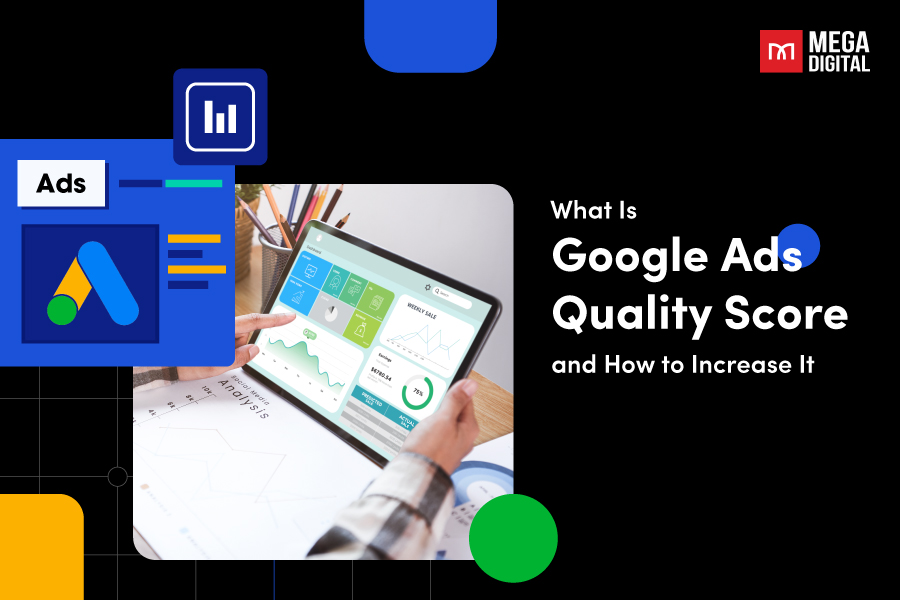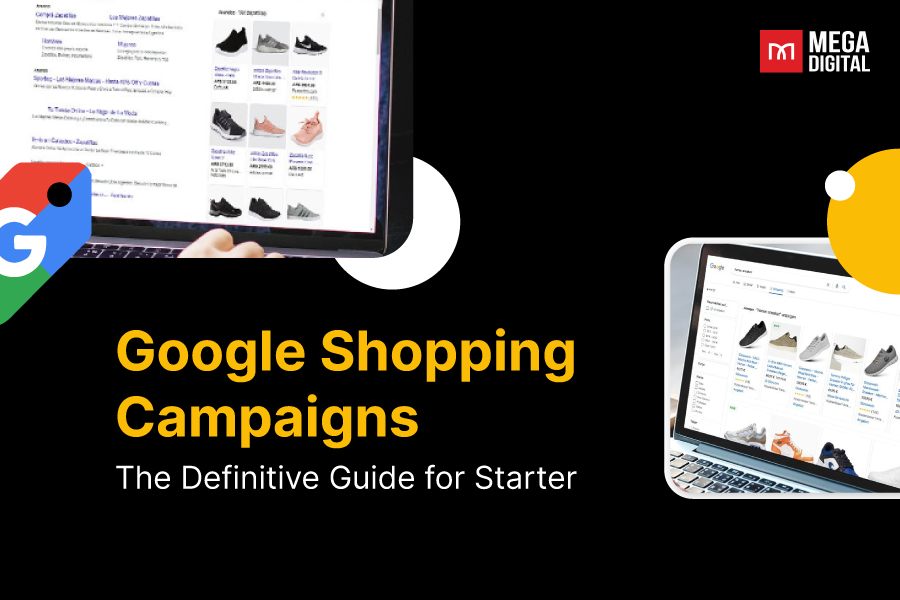If you have been running your Facebook ad campaign for a while and looking to expand your audience reach, you’re in the right place. In this blog post, I will explain broad targeting Facebook Ads, a powerful tool that can transform your digital marketing strategy, opening doors to potential customers you never knew existed. Let’s dive in and explore the untapped potential of broad targeting on Facebook.
What are Broad Targeting Facebook Ads?
Facebook broad targeting is a type of targeting that you are setting up at the Adset Level that gives Facebook the freedom to choose to whom to show your ads.
Broad targeting Facebook ads allow advertisers to reach a larger, more diverse audience. Unlike traditional targeting methods, which focus on specific demographics or interests, broad audience Facebook ads cast a wider net, capturing potential customers who may not have been considered in a more narrow targeting approach.
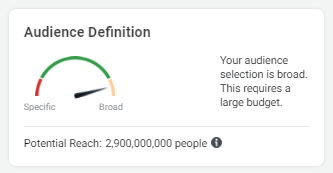
Pros and Cons of Broad Targeting Facebook Ads
Broad targeting Facebook ads can be a powerful tool in your digital marketing strategy, but like any tool, they come with their own set of pros and cons. Understanding these can help you make an informed decision about whether to use broad targeting for your Facebook ad campaigns.
Pros of Broad Targeting
- Reach a wider audience: Expand your potential customer base significantly. Broad targeting allows you to tap into a pool of users who might not have explicitly expressed interest in your product or service but still exhibit characteristics that drive engagement.
- Discover new customer segments: Broad targeting can help you uncover hidden gems – potential customers you never knew existed. By exposing your ad to a wider range of users, you might discover entirely new demographics or psychographics that resonate with your brand.
- Optimize for conversions: Facebook’s algorithm continuously learns and optimizes based on user behavior. With broad targeting, you allow the algorithm more freedom to identify users most likely to convert, potentially leading to a higher return on ad spend (ROAS).
- Reduce targeting fatigue: Overly specific targeting can lead to “targeting fatigue,” where the same group of users sees your ad repeatedly, leading to ad blindness. Broad targeting helps alleviate this by introducing your ad to fresh faces.
Cons of Broad Targeting
- Less targeted: When using broad targeting, your ads may be shown to people who are not interested in your product or service. This could potentially lead to lower engagement and conversion rates.
- Less personalization: With broad targeting, it’s harder to personalize your ads for specific audiences. This could make your ads way less effective.
- Higher costs: While broad targeting can reach a larger audience, it can also be more costly. Because your ads are being shown to a larger group of people, you may end up spending more on your ad campaign.
- Requires more analysis: Because you’re reaching a larger, more diverse audience, you’ll need to spend more time analyzing your ad performance to understand who is engaging with your ads and why.
When Should You Use Broad Targeting Facebook Ads?
Broad targeting Facebook ads can be a powerful tool, but it definitely isn’t a one-size-fits-all strategy. It’s important to know when to use them for maximum effectiveness. Here are some scenarios where broad targeting can be particularly beneficial:
Have a product or service that fits everyone
If your product or service has a universal appeal, broad targeting can be an excellent strategy. For instance, everyday items like toothpaste or mobile apps that cater to a wide audience can benefit from broad targeting. By casting a wide net, you can reach potential customers from all walks of life, increasing the chances of conversions.
Launch a new product or service
When you’re launching an entirely new product or service, you might not have a clear understanding of your ideal customer profile. In such cases, broad targeting can help you reach a diverse audience and gather data about who is interested in your offering. This data can then be used to refine your targeting strategy for future campaigns.
Build brand awareness
Broad targeting is also a great strategy for building brand awareness. By reaching a wide audience, you can increase the visibility of your brand and attract potential customers who might not have been aware of your products or services. Remember, the more people know about your brand, the more likely they are to become customers in the future.
Broad vs Lookalike Audiences: Choosing the Right Targeting
Lookalike audience, another powerful Facebook Ads targeting feature, allows you to reach new users similar to your existing customers or website visitors. While both broad and lookalike audiences aim to expand your reach, they function differently:
| Broad Audience | Lookalike Audience | |
|---|---|---|
| Target audience | Completely new audience based on Facebook’s algorithm predictions | Users similar to your existing customers or website visitors |
| Targeting method | Demographics, interests, behaviors (loosely defined) | Leverages your existing customer data |
| Level of control | Lower (Facebook algorithm has more control) | Higher (based on your existing customer data) |
| Reach | Potentially much larger | Similar to your existing customer base |
| Discovery potential | Higher chance of discovering new customer segments | Lower chance of discovering entirely new audiences |
| Learning curve | Lower (easier to set up) | Higher (requires existing customer data) |
| Best for: | Launching new products, building brand awareness, retargeting website visitors (discovery phase) | Expanding reach to users similar to your existing customers, driving conversions (consideration phase) |
In short, while lookalike audiences can be effective, they are based on your existing customers or website visitors. On the other hand, broad targeting Facebook ads allows you to reach new potential customers who have not interacted with your brand before but may be interested in your products or services.
How to Set Broad Targeting For Your Facebook Ad Campaign?
- Create a new campaign: Log into your Facebook Ads Manager and click on the ‘+ Create’ button to start a new campaign.
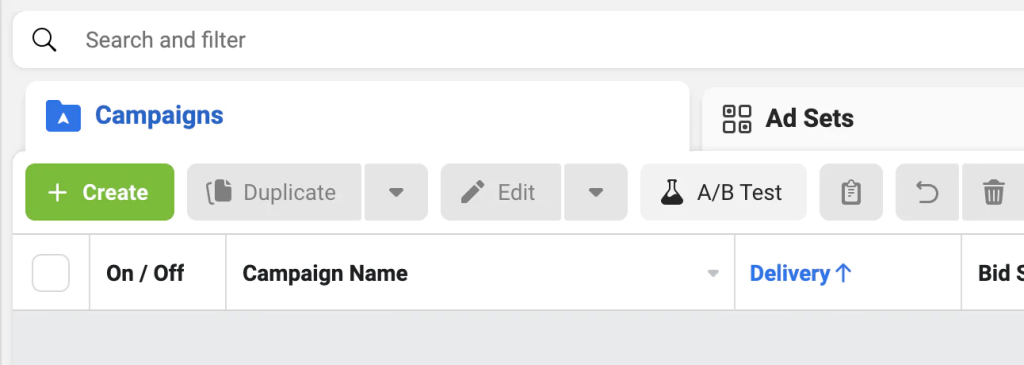
- Choose your objective: Select the objective that aligns with your goals.
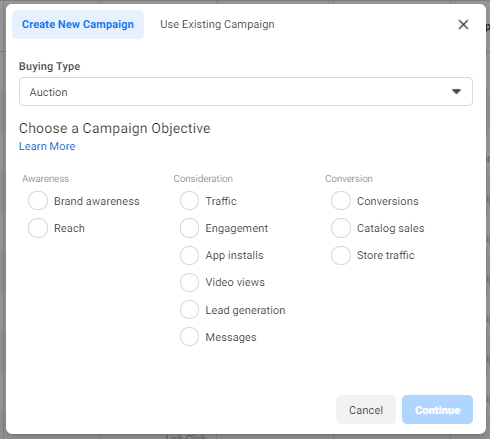
- Set up your ad set: In the ‘Ad Set’ section, you’ll define your audience, placement, budget, and schedule. Here’s where you’ll set your targeting to ‘Broad’.
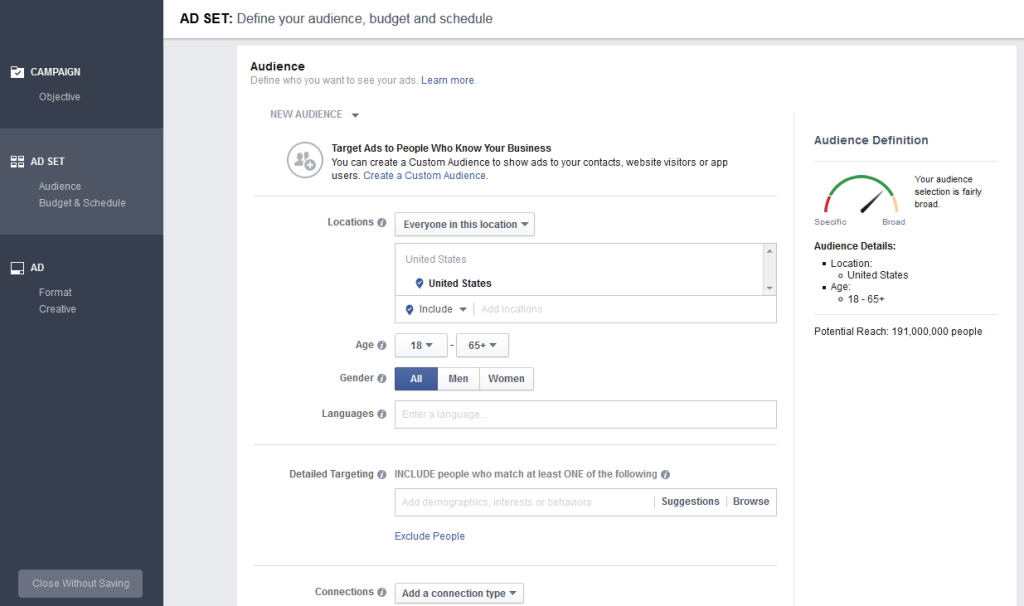
- Define your audience: Instead of narrowing down your audience with specific demographics or interests, leave these fields as broad as possible. You can choose a location but try to keep it broad as well.
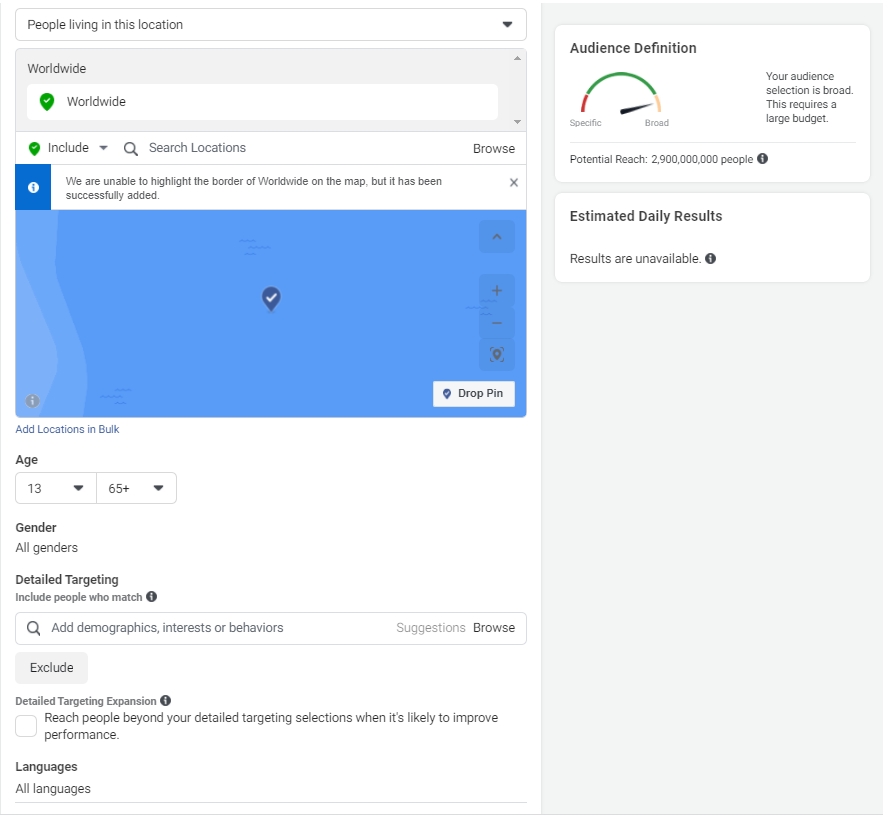
- Choose your placements: You can choose ‘Automatic Placements’ where Facebook decides the best places to show your ads, or ‘Manual Placements’ where you decide where to show your ads.
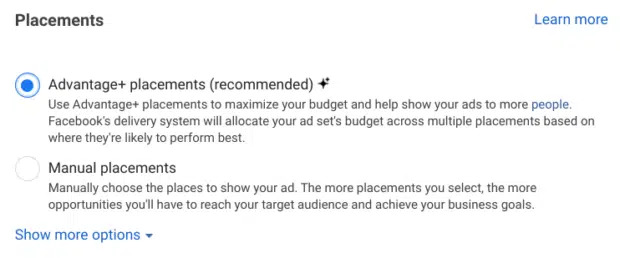
- Set your budget and schedule: Decide how much you want to spend and set the duration for your ad campaign. A well-planned budget strategy can prevent your campaign from running out of funds, which could lead to your ads not spending or not delivering, so give it careful consideration.
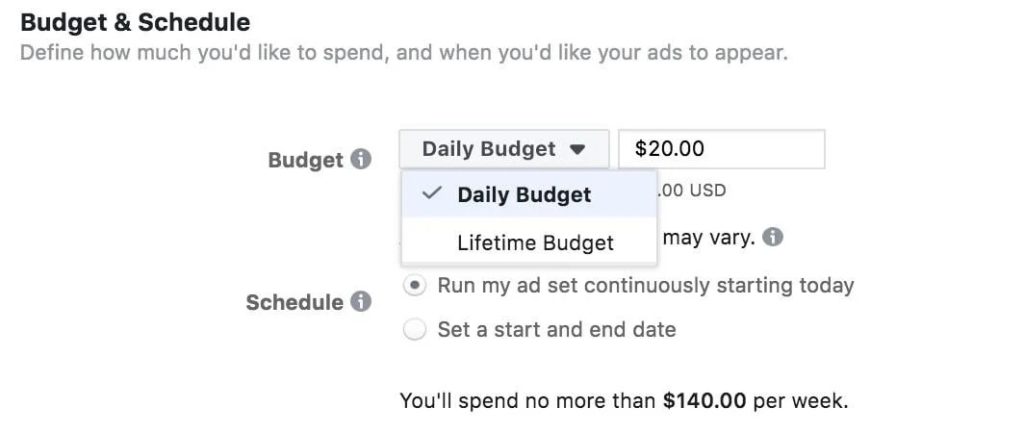
- Create your ad: Finally, create your ad with engaging text and visuals. Make sure your ad is relevant to the broad audience you’re targeting.
Best Practices for Broad Targeting Facebook Ads
While broad targeting offers a wider reach, it requires a strategic approach to ensure success. Here are some best practices that you follow:
Compelling ad creative
Since you’re targeting a broader audience, your ad creative needs to be exceptional. Craft engaging visuals, write clear and concise messaging, and highlight the unique value proposition of your product or service.
Leverage Facebook targeting expansions
Facebook offers “targeting expansions” within the ad set settings. This allows the algorithm to automatically identify users with similar characteristics to your target audience, potentially reaching a more relevant audience while maintaining a broader scope.
Optimize based on performance data
Closely monitor campaign performance metrics like reach, engagement, and conversions. Analyze which demographics and behaviors resonate most with your audience and adjust your targeting strategy accordingly.
Utilize Facebook conversion tracking tools
Whether you’re using the Facebook Pixel or Conversions API, ensure proper conversion tracking is set up. This allows you to measure the effectiveness of your campaign and optimize for the desired actions.
>>> Read more: Conversion API vs Meta Pixel: What’s the Difference? Which to Use?
Test different variations
Don’t be afraid to experiment! Try different ad creatives, headlines, and targeting parameters to see what resonates best with your audience. A/B testing is crucial for uncovering the most effective combination of elements.
Wrap-up
Broad targeting Facebook ads offer a unique opportunity to reach a larger and more diverse audience. By implementing a strategic approach and continuously monitoring and adjusting your ads, you can leverage the power of broad audience Facebook ads to boost your online presence and drive sales.
Looking to leverage your Facebook advertising performance? Then you should consider partnering with a highly-trusted Facebook Partner like Mega Digital. By working with us, you’ll gain access to valuable data and expert assistance to scale your campaigns effectively. We’re just a click away. Discover more today!







